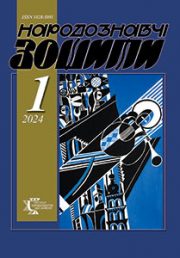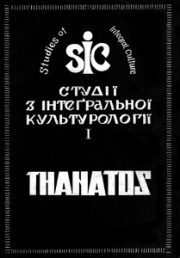The Ethnology Notebooks. 2021. № 6 (162), 1397—1412
UDK 94(438)”1918/1939″+ 725.9
DOI https://doi.org/10.15407/nz2021.06.1397
«DESTROY OR SAVE». DISCUSSION ON THE FATE OF ALEXANDER NEVSKY CATHEDRAL IN WARSAW IN 1918—1923
STARODUB Andriy
- ORCID ID: https://orcid.org/0000-0003-3464-3533
- Candidate of historical sciences, senior researcher,
- М.S. Hrushevsky Institute of Ukrainian Archeography
- and Source Studies of the National
- Academy of Sciences of Ukraine,
- 4, Triohsviatytelska str., 01001, Kyiv, Ukraine,
- Contacts: e-mail: andriystarodub@gmail.com
Abstract. The article considers the peculiarities of the socio-political discussion that arose in the first years of the Second Polish Rebublic and concerned the future of the largest Orthodox religious building in the region — St. Oleksandr Nevsky Cathedral in Warsaw. The urgency of the topic lies in the need to study the peculiarities of the perception of newcomers after the World War I, states «imperial» architectural heritage and the prospects for the use/destruction of certain landmarks in the new political realities. The subject of the study is the position of certain political, social, scientific and cultural circles in the case of the «church on Saxon Square».
The source base of the study are documents deposited in the archives of some Polish ministries and departments (mainly the Ministry of Religious and Public Education), transcripts of parliamentary sessions, as well as a number of publications that appeared in the Polish press during 1918—1923 years.
The methodological basis of the article is the principles of historicism, systematics and comparability with the use of cultural-historical and comparative-typological approaches.
The author made the following conclusions:
— Despite the fact that the cathedral was clearly at odds with the architectural environment and was a reminder of the era of Russian rule, its «fate» was not decided in advance. Parliamentarians, government officials, and representatives of art circles discussed various solutions to the problem. The chances of preserving the building remained until the spring of 1923;
— The main «dividing lines» between proponents of different solutions were not strictly determined by belonging to political, religious or professional backgrounds. Representatives of national minorities and the Orthodox Metropolitanate in Poland did not actually take part in the discussions;
— One of the motivating factors for a quick and radical government decision in 1923 was the realization of the possible negative consequences of this problem for domestic political stability. The cathedral was dismantled not only as a «symbol of Russian rule» but also as a «pretext for unnecessary conflicts» in the independent Poland.
Keywords: Oleksandr Nevsky Cathedral in Warsaw, Second Polish Republic, Legislative Sejm (1919—1922), de-russification.
Received 27.08.2021
REFERENCES
- Haska, A., & Grкbecka, Z. and Sadowski, J. (Ed.). (2007). «Undress or leave it? Cathedral of St. Oleksandr Nevsky and the Palace of Culture». «Palace of Culture and Science. Between ideology and mass imagination» (Pp. 51—58) [in Polish].
- Krуlikowski, J., & Konstantynуw, D. and Paszkiewicz, P. (Ed.) (1994). Metamorphoses of imperial architecture — from the cathedral on Saski Square to the Palace of Culture and Science. Culture and politics. The influence of the Russification policy on the culture of the western fringes of the Russian Empire (1772—1915). Warsaw [in Polish].
- Kula, M.(2012). Cathedral of St. Oleksandr has fallen, the Palace of Culture has survived. «Filosophico-Literary Review», 4 (35), 431—448 [in Polish].
- Paszkiewicz, P. (1991). Under the scepter of the Romanovs: Russian art in Warsaw 1815—1915. Warszawa: PAN [in Polish].
- Cynalewska-Kuczma, P. (2004). Church architecture of the Kingdom of Poland as a tool of integration with the Russian Empire [in Polish].
- Malte, R., & Sperling, W. (Ed.). (2008). Russian Rule in Warsaw: The Oleksandr Nevsky Cathedral in the Conflict Area of Political Communication. Beyond the tsarist power. Dimensions of the Politics in the Russian Empire, 1800—1917 (Pp. 163—190). Frankfurt/M.; Campus [in German].
- Bertash, A. (2016). Orthodox Church in Poland and Russian emigration before World War II. General overview and the fate of Russian churches. Retrieved from: https://bogoslov.ru/article/4861337 [in Russian].
- Labyntsev, Y., & Shchavinskaya, L. (1999). Alexander Nevsky Cathedral in Warsaw. Radonezh, 9—10, 10—11 [in Russian].
- Michalak, G. (2010). The Oleksandr Nevsky cathedral in Saxon squere in the light of polish interwar press. «Saeculum Christianum», 1, 79—91 [in Polish].
- Toііoczko, Z., & Kadіuczka, A. (Ed.). (2014). From the history of unwanted architecture. The story about the rise and destruction of the Council of St. Oleksandr Nevsky in Saxon Square in Warsaw. History and the present in architecture and urban planning (Vol. 2, pp. 5—24) [in Polish].
- Tomasik, W. (2018). Death of the temple. Texts Second Literary theory, criticism, interpretation, 1, 240—258 [in Polish].
- Zarychta, M. (2018). Demolition of the Former Oleksandr Nevsky Cathedral in the Saxon Square in Warsaw. Case Study in the Field of Politics and Administration of Central and Local Government Authorities of the Reborn Polish Republic. Memory and Justice, 32, 416—439 [in Polish].
- Oksytiuk, D. (2005). Orthodox churches and chapels in Warsaw after 1915. Journal of Urban Ethnology, 7, 79—92 [in Polish].
- Zubowski, P. (2017). Between Sacrum and Profanum. The Problem of the Russian Orthodox Sacred Building in Warsaw during the Second Polish Republic (1919—1939). Bulletin of the Polish Historical Mission, 12, 105—134 [in German].
- Golimont, А. (2020). Salvages and urban legends — fate of the remnants of Oleksandr Nevsky cathedral in Warsaw. Elpis (Pp. 69—77) [in Polish].
- Talwinski, M., & Synoradzki, M. (Ed.). (1919). About monuments and Orthodox churches. In 2nd Congress of Representatives of Polish Cities. Warsaw [in Polish].
- (1920). Shorthand report of the meeting of the Legislative Sejm 152 of 1 June 1920 year [in Polish].
- Archives of New Records, Presidium of the Council of Ministers, Meetings of the Council of Ministers of the Republic of Poland (Vol. 21). Protocols with attachments. January 1, 1923 — March 31, 1923 [in Polish].
- (1920). Survey on the cathedral on Saxon Square in Warsaw conducted by the Sejm subcommittee of public works with the participation of representatives of the Ministry of Public Works, the Ministry of Art and Culture, the City of Warsaw, the Association of Architects, the Association of Polish Builders and the Society for the Protection of Monuments of the Past [in Polish].
- Archives of New Records, Ministry of Religious Denominations and Public Education, 1222 Estates — Orthodox churches — detailed files in alphabetical order by locality (Vol. XIV). Warsaw [in Polish].
- (1923). Shorthand report on the 35th session of the Sejm on April 23, 1923 [in Polish].
- Trojanowski, W. (1920). Orthodox Cathedral on Saxon sq. «Forward», 181, 4 [in Polish].
- Wandke, W. (1919). Orthodox church on Saxon sq. The bloodiest symbol of charism. «Polish courier», 79, 4 [in Polish].
- (1920). Defenders of the cathedral. «The thought of independence», 487, 174—178 [in Polish].
- Filipski, R. (1918). On the cathedral in Saxon Square. «Warsaw Newspaper», 44, 7 [in Polish].
- Pachnowski, A. (1919). Not to demolish, but to build. «Festive newspaper», 1996, 3 [in Polish].
- (1920). On the day. «Morning Newspaper», 94, 3 [in Polish].
- (1920). The case of the cathedral [Opinion of engineers]. «Warsaw Newspaper», 36, 7 [in Polish].
- (1920). Cathedral. «Independent Thought», 505, 564—565 [in Polish].
- Gardecki, J. (1919). In defense of Polish culture. Speech about the cathedral on Saxon square «Warsaw Newspaper», 66, 8 [in Polish].
- (1922). Cathedral on Saxon square and communal taxes. «Republic», 123, 5 [in Polish].
- Rembowski, J. Cathedral at Saxon Square. «Newspaper Poland», 231, 3—4 [in Polish].
- Їeromski, S. (1920). Wisіa. Warsaw: J. Mortkowicz [in Polish].
- Pieсkowski, S. (1920). «Soborites» [Defenders of the Cathedral]. «Warsaw Newspaper», 124, 6—7 [in Polish].
- Weinfeld, M. (1919). Saxon Square and the Cathedral. «Newspaper Poland», 31, 3—4 [in Polish].
- Hі., Stan. (1920). For the Temple in Saxon Square. The Illustrated Weekly, 18, 359—360 [in Polish].
- (1919). And the cathedral in Saxon square is standing. «Housefly», 9, 2 [in Polish].
- (1923). The demolition of the cathedral — the state of law. «Republic», 110, 3 [in Polish].






